#history with joanna
Text

Reference drawing of Juana I of Castile for the Tomb of Maximillian I by Jörg Kölderer (1522)
#peep the little pomegranate🥹#juana i of castile#juana of castile#joanna of castile#juana la loca#maximilian i#art#art history#history of art#drawing#northern renaissance art#northern renaissance#renaissance art#renaissance#renaissance history#16th century art#16th century#sixteenth century#16th century fashion#1500s#history#holy roman empire#holy roman emperor#tomb#early modern#flemish art#Flanders#netherlands#netherlandish art#austrian art
440 notes
·
View notes
Photo

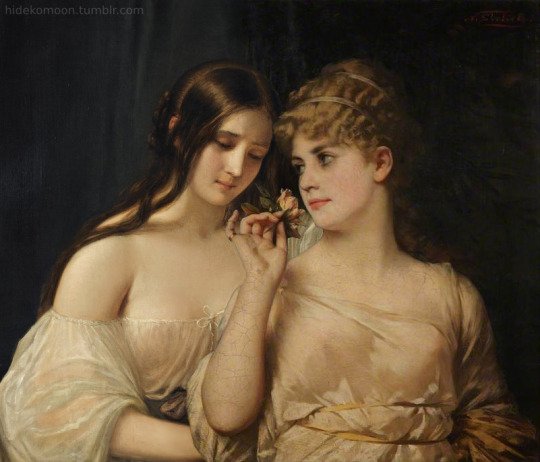


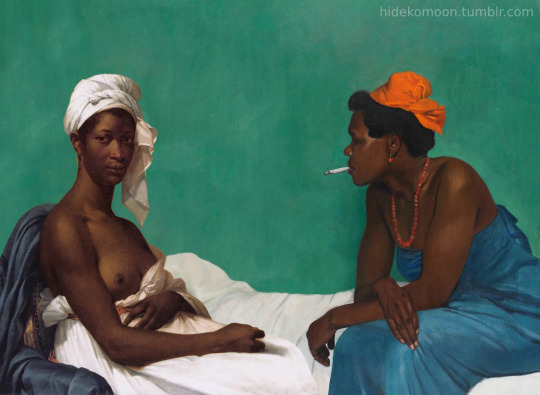
i finished the first 3 last spring and then completely gave up on this project until i completed number 4 & 5 this week. i’m kind of running out of paintings with easy poses to photoshop together but i’m gonna keep looking! (here’s my little collection of lesbian montages)
1. Evelyn de Morgan’s The Prisoner (1907-08) with Joanna Mary Boyce’s portrait of Fanny Eaton (1859)
2. Waterhouse’s The Awakening of Adonis (c.1900) and John Simmons’s Titania Sleeping in the Moonlight Protected by her Fairies
3. Portrait of a Lady by Natale Schiavoni (c.1820) with Nathaniel Sichel’s In the Time of Roses
4. A painting by Eugene de Blaas and L’Espoir by Auguste Leroux
5. La Blanche et la Noire by Félix Valloton (1913) with Portrait of Madeleine by Marie-Guillemine Benoist (1800)
#medievalcore#painting#mine#lesbian#wlw#art history#evelyn de morgan#john william waterhouse#waterhouse#fanny eaton#joanna mary boyce#pre raphaelite#academism#classical#mythology#sapphic#the first one is my favorite montage i've ever done tbh. boyce's portrait of fanny eaton is just perfect
183 notes
·
View notes
Text
was supposed to only skim through a book I need to study for an exam but it actually ended up being interesting. I don't think I'll ever graduate

#it's called fear: a cultural history by joanna bourke#last night i read the chapter about disasters and mass panic#and how if mass panic sets in it'll take 5 minutes for people to start dying. so you have to be able to evacuate in 3-4 minutes#also mass panic sets easily in places where emotions are manipulated ie. theatre and sports stadiums#after the victoria hall disaster in 1883 where children were trampled to death as they scrambled for a toy prize after a theatre show#they invented those doors with the horisontal handles that you can push and they open. the crash bar#which prevents a mass of people getting stuck#anyway. i'm here all week for history trivia#nor's rambles
112 notes
·
View notes
Text
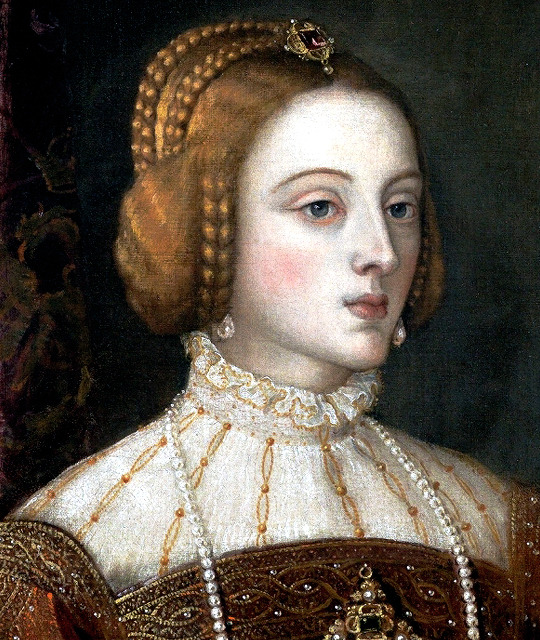

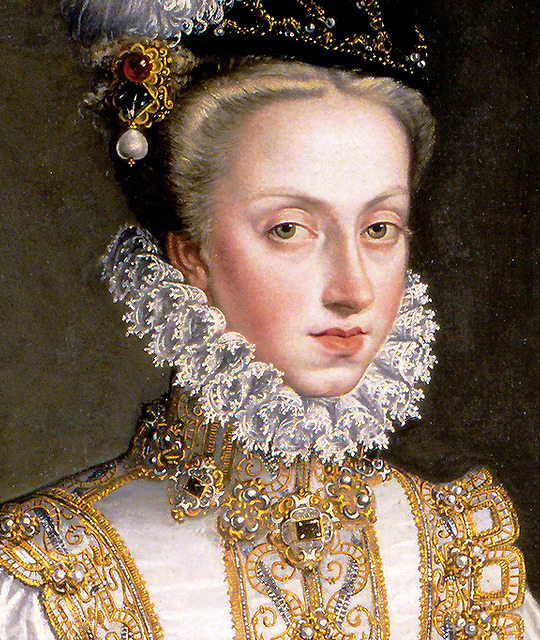
ISABELLA OF PORTUGAL by Titian, 1548
JOANNA OF AUSTRIA by Sánchez Coello, 1557
ANNA OF AUSTRIA by Bartolomé González y Serrano, 1570
#historyedit#isabella of portugal#joanna of austria#juana of austria#anna of austria#queen of portugal#queen of spain#princess of portugal#history#women in history#house of aviz#house of habsburg#titian#alonso sanchez coello#bartolome gonzalez y serrano#art#renaissance art#gramma isabella#joanna was isabella's daughter#and anna was joanna's niece#thus isabella's granddaughter#edit#x#i just love how anna looked more like her aunt than her own mom 🥹#and both joanna and anna looked like their grandma
387 notes
·
View notes
Text
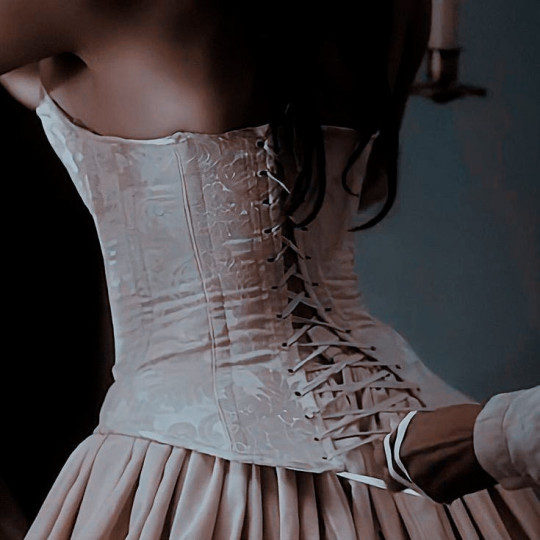




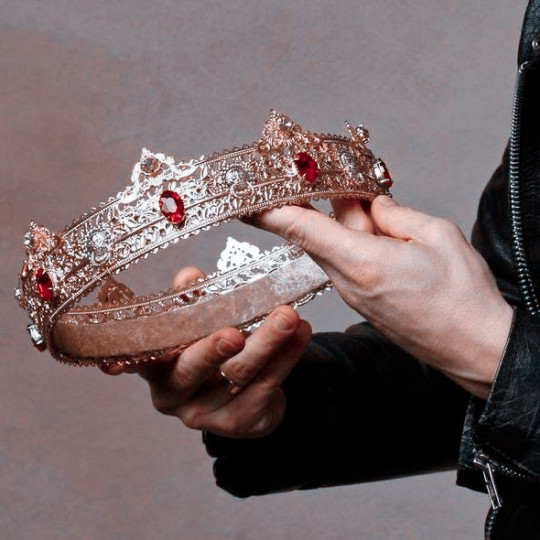


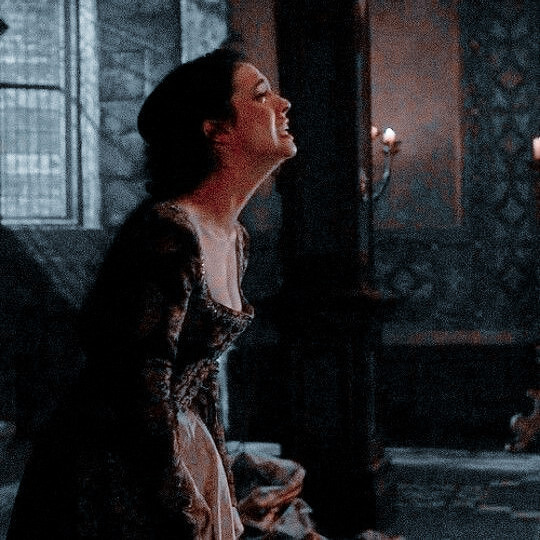
– juana i de trastámara ; infanta of spain, duchess consort of burgundy, queen of castile, aragon, valencia, mallorca, navarre, naples, sicily, sardinia and countess of barcelona was born on this day, 6th of november of 1479
#juana i de castilla#joanna of castile#juana the mad#house of trastamara#spanish history#on this day in history#weloveperiddrama#women in history#perioddramaedit#isabel tve#la corona partida#irene escolar#myedit*
56 notes
·
View notes
Text
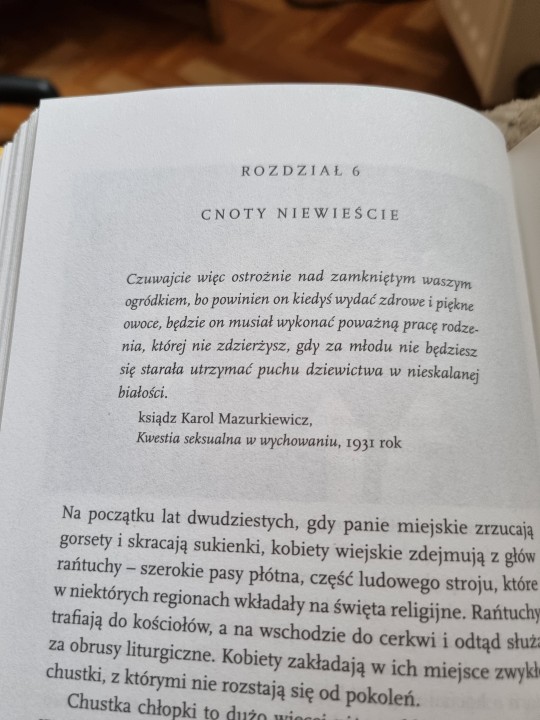
Czarnek ikoną popkultury | Pani Kuciel-Frydryszak idealnie użyła słów byłego (🤞🏻 i mam nadzieję, że nigdy nie wróci) ministra edukacji (z małych, bo nie szanujemy go) o pielęgnacji cnót niewieścich, jako tytuł rozdziału omawiające patologię i przemoc wobec kobiet w wiejskich domach w dwudziestoleciu międzywojennym.
Słowa człowieka, który miał reprezentować oświatę polską w XXI w., skonfrontowano z okrutną prawdą patriarchatu na niewyedukowanej i biednej polskiej wsi (na której po dziś dzień do pewnego stopnia ta stara mentalność się utrzymuje) 100 lat temu. Tego chciał dla nas pan C. Taki człowiek, w tych czasach, nie powinien zostać dopuszczony do wystąpień publicznych, a co dopiero, nie powinien reprezentować i rządzić segmentem edukacji.
Polecam wszystkim reportaż "Chłopki. Opowieść o naszych babkach" Pani Joanny Kuciel-Frydryszak. Dla mnie, osoby, której babka urodziła i wychowała się na wsi (może niejedna, niestety tylko o jednej wiem), z matką wychowaną w pgr [choć książka nie o tych czasach] ta książka otwiera oczy i brutalnie przedstawia rzeczywistość, z którą musiały się mierzyć kobiet z przynajmniej jednej strony mojej rodziny. Wiedziałam, że tak było. Chyba każdy ma te drastyczne historie gdzieś z tyłu głowy. Jednakże przeczytanie o tych społeczno-psychologicznych uwarunkowaniach życia sprzed ok. 100 lat pomaga mi patrzeć na historię (jednej gałęzi) mojej rodziny z nieco większym współczuciem i wyrozumieniem.
W pewnych historiach doszukuję się (i znajduję) swoją babkę, rozmyślam, czy ona też tak to przeżywała, czy może jej życie okazało się, chociaż odrobinę lepsze od najgorszych opisywanych tu historii. Niesamowita przepaść między naszymi pokoleniami. Zupełnie inna mentalność. Ten reportaż pozwala mi o wiele bardziej docenić to, co mamy i zrozumieć, skąd biorą się te zgromadzone od pokoleń traumy, z którymi dopiero teraz próbujemy się rozliczyć.
Oby już nikt nigdy nie wyszedł na mównicę, mówiąc nam o cnotach niewieścich. Nie po to nasze przodkinie cierpiały, niejednokrotnie marząc o śmierci, by jakiś uprzywilejowany mężczyzna znów mówił nam, co mamy robić ze swoim ciałem i życiem.
Przepraszam, rozpisałam się, ale dawno nie czułam takich emocji. To trudna lektura, szczególnie dla mnie, bo jestem dziekiem nadwrażliwym. Zazwyczaj nie czytam reportaży, bo wiem, że są o wiele bardziej przerażające niż horrory. W horrorach najczęściej potworem jest zła moc, duch, demon. W reportażach najgorszym potworem są zawsze inni ludzie.
#reportaż#chłopki#chłopki opowieść o naszch babkach#polski reportaż#joanna kuciel-frydryszak#feminizm#feminist#feminism#polska historia#polish history#***** ***#books#book review#książka#książkoholik#kobiety#cnoty niewieście#poland#polish#polska#polska literatura#polski cytat#historia polski#polska wieś#wieś#po polsku#book#personal#katolik#catholiscism
29 notes
·
View notes
Photo


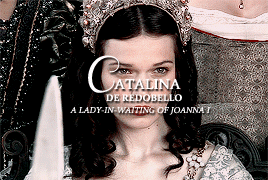
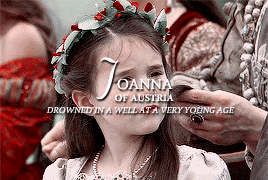
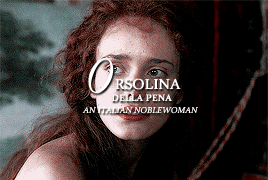

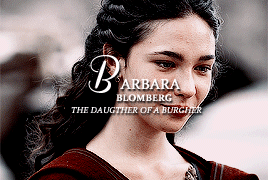

→ history + the mistresses of charles v and their children
requested by anonymous
#historyedit#joanna maria van der gheynst#margaret of parma#catalina de redobello#joanna of austria (illegitimate daughter of charles v)#orsolina della pena#tadea of austria#barbara blomberg#john of austria#charles v#16th century#early modern history#house of habsburg#house of austria#*history#*requests#*mine
376 notes
·
View notes
Text
Thread about Joanna of Castile: Part : 10 “A Storm of Jealousy: Juana and Philip's Turbulent Reunion"


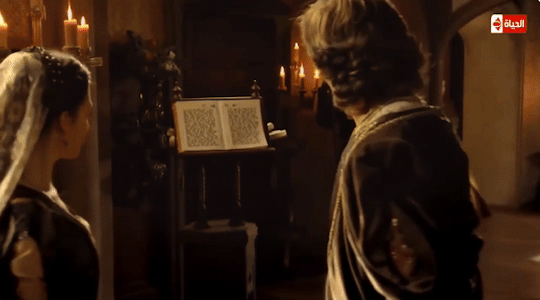
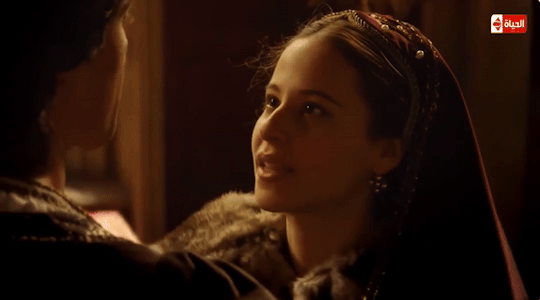
By May 1504, Juana was in Burgundy. Juana’s reunion with Philip and the children was joyful.
But soon afterwards she suspected, or discovered, an affair between Philip and a noblewoman in her entourage:
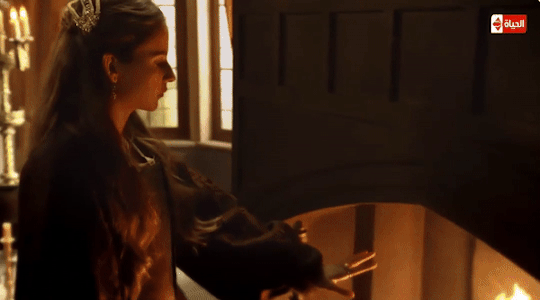



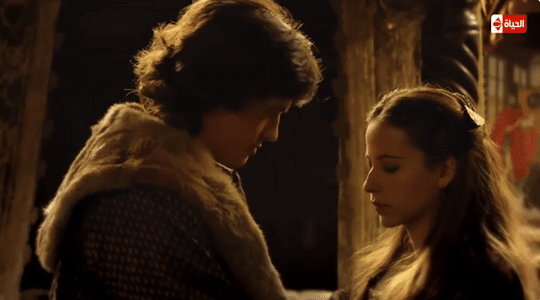

“They say,” writes Martire, “that, her heart full of rage, her face vomiting fames, her teeth clenched, she rained blows on one of her ladies, whom she suspected of being the lover, and ordered that they cut her blond hair, so pleasing to Philip …”


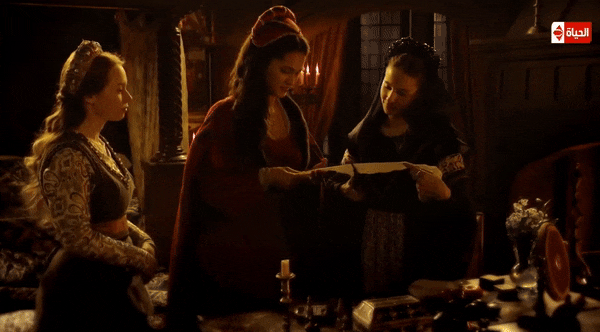
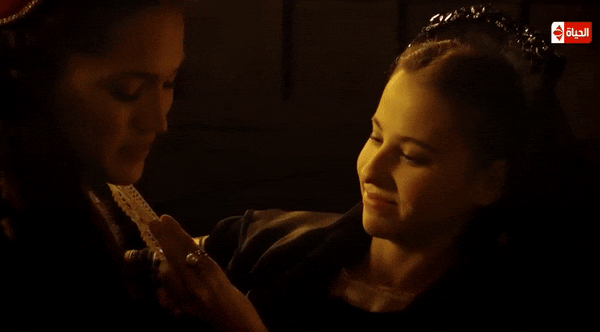


Philip’s response was equally furious. He had “thrown himself” on his wife and publicly insulted her.
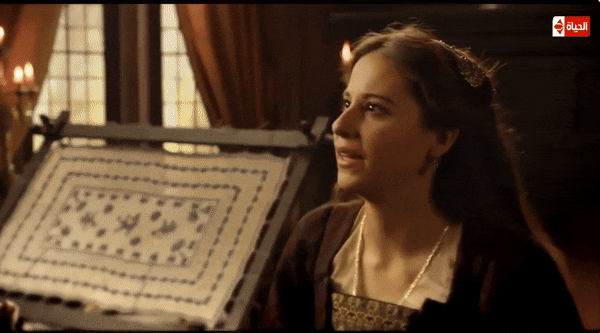



Sensitive and obstinate, “Juana is heartbroken … and unwell …”.
Isabel “suffers much, astonished by the northerner’s violence.
Maximilian’s biographer, Wiesfecker, describes Juana’s response as:
"The symptom of a pathological, passionate, if not unfounded, Haßliebe, fomenting continual strife. "
Juana would have known for years about Philip's visits to the baigneries and his more casual relationships with women. However, this affair seemed to pose a direct challenge to her standing and dignity. Juana knew her faults and had tried to limit them. In 1500, after becoming princess, she had asked Isabel to send her an honest and prudent Spanish lady who:
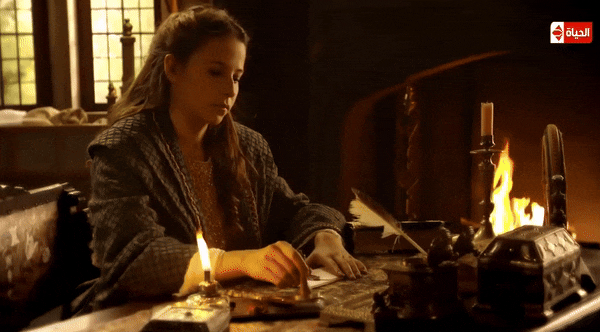



“Knows how to advise her, and where she sees something out of order (‘deshordenado’) in her conduct could say so as servant and adviser but not as an equal because, even if the advice were good, if expressed in a disrespectful way it would create more anger in she to whom it was said than it would allow for correction.”
Sources: Fleming, G. B. (2018). Juana I: Legitimacy and Conflict in Sixteenth-Century Castile (1st ed. 2018 edition). Palgrave Macmillan.
Fox, J. (2012). Sister Queens: The Noble, Tragic Lives of Katherine of Aragon and Juana, Queen of Castile. Ballantine Books.
Gómez, M. A., Juan-Navarro, S., & Zatlin, P. (2008). Juana of Castile: History and Myth of the Mad Queen. Associated University Presse.
#joanna of castile#juana i of castile#juana la loca#philip the handsome#isabel#european history#spanish monarchy#spanish princess#infanta#irene escolar#raul merida#flanders#vlaanderen#Huis Habsburg#House of Valois-Burgundy#Filips I van Castilië#Philippe le Beau
6 notes
·
View notes
Text
I kind of hate that, as a historian, my knowledge bank is composed of two very contrasting things:
genocide/ethnic cleansing
historical textiles and fashion
like great, I can tell you about when x tried to kill a bunch of people or you can have me look at your favorite dumbass’ outfit and i can tell you all about a bunch of crazy little details you probably have no clue even existed
#ooc#[ like raphael’s outfit is interesting to me for example ]#[ because it looks like it would high renaissance and it’s not ]#[ his outfit is from late medieval spanish aristocrat fashion ]#[ worn during the formative years of the inquisition ]#[ the details on his sleeves are called guarding and they came into fashion in the last two decades of the 1400’s ]#[ they’re meant to be evocative of wartime mending by soldiers having to stitch their uniforms back into serviceable condition ]#[ high class nobles slashed their garments to evoke the look and then sewed in new pieces ]#[ this is how passementerie got started which is where lace-making got its start ]#[ most often as panel pieces to insert for guards and then later as their own separate thing ]#[ another fun detail: that was a very pivotal time in spanish history ]#[ the fashion would peak around the reign of joanna of castile ]#[ her son would go on to become not only a king of spain but the holy roman emperor ]#[ textiles: lot of fun nuances can be put into characters without having to say a thing ]
11 notes
·
View notes
Note
What are your thoughts on Jane Boleyn, and the role she supposedly played in the fall of 3 Queens (Anne Boleyn, Anna of Cleves, Katheryn Howard)? Do you think she has been too maligned by historians for centuries, especially when it comes to the relationship with the Boleyns (it seems she got along with Anne)?
Now that I've read both works and compared them side by side, I suppose I would say my stance on Jane Boleyn falls somewhere in between that of Julia Fox and James Taffe ('Somewhere in between' is not, btw, Alison Weir); although closer to the former than the latter. Offering critique of both biographies, I would say that of JF is too apologetic (smoothing out wrinkles that exist in her arguments rather than acknowledging them) and JT is too severe.
Especially when it comes to the relationship with the Boleyns? Yes and no. Obviously she was married to George, she sent him a message of comfort while he was in the Tower, and wore only black the rest of her life, which was quite the potent statement. However, I would allow for the possibility that she potentially, inadvertently implicated him or AB (ie, testimony of hers was twisted to suit the crown's case). This is where I think there are flaws in the arguments of some of her defenders-- they cannot allow for even that possibility and so make claims that disallow it; some of which are untrue. 'Jane was only blamed as a means of absolving Henry in the whitewash of Elizabethan propagandists' is not true. Johannes Sleidan in 1545 claimed that Anne and George died by her 'false accusation'. Sleidan was a Reformer, so he would have been more sympathetic towards the plights of these two than the average person, and would have spoken to others that were as well, but the motivation to vindicate Elizabeth did not yet exist; she was at this point the very unlikely third in line to the throne.
I do appreciate that you said 'got along' with Anne, not 'besties', because...it's possible they were very close, certainly, but we must also allow for the possibility of animosity. The linchpin for the argument of closeness is the report from Chapuys that they 'conspired together' to banish Henry's mistress from court. Was this the precise truth? Considering the source I'm doubtful. Probably there was a lady Henry was serving at this time (although that we never have a name makes the story somewhat suppositious), but did they need to have 'conspired together' against her for Jane to be banished from court (which is what happened instead)? Jane might have merely made Anne aware of her, and Henry finding out that she'd been the source would have been enough for banishment. Or, as was presented plausibly in Adrienne Dillard's fictional rendition, Jane might have dropped hints to Cromwell that this mistress was a supporter of the two exiled and contumacious royal women that were Anne's adversaries, Cromwell might have passed this along to Henry, and Henry might have banished Jane for shattering the illusion that this woman had no independent ambitions or ulterior motives and merely let him hit for the sheer pleasure of his company.
If this was evidence of closeness, and it might be, then we also have to remember that the end result was Jane's banishment from court, and that there is, as JT fairly pointed out, no evidence that any of the Boleyns spoke in her defense, favor, or for her return. It would take an extremely magnanimous person to accept all that with equanimity and not feel any resentment whatsoever. So, if there was intimacy, there might have also been rift.
That leaves the question: enough 'rift' for her to seek vengeance? I doubt that much for all the reasons Fox outlines in her biography, but at the same time I wish there was not this relentless push to only defend women that we assert 'deserve' defense, on the premise they were entirely selfless, accepted every insult with grace, never kept any grudges, never had personal ambitions (the actions she took during the queenships of those you mentioned would suggest otherwise), mixed emotions, or conflicting loyalties; that we could acknowledge that acknowledging the agency of historic women also means acknowledging they were capable of making mistakes.
#anon#it feels like an 'overcorrection' to some degree. if that makes sense?#altho that's generally what ppl say about AB too and i generally think they're wrong lol#'waaah AB apologism waaaaahhh joanna denny wahhhhhhhhhhhh h/ayley nolan'#bitch. no one serious is taking those seriously. if joanna denny was the definitive AB bio that would be one thing#the definitive is eric ives who oh no said in his personal opinion that his favorite was more attractive in personality and appearance#than the other...oh my god that is the worst thing anyone has every said in the HISTORY OF TIME#are y'all this sensitive in real life bcus fr.#how do you bitches SURVIVE..................#anyway what i was initially going to say after coming back to this:#*ever#like the way this figure is used to have it both ways really bothers...me?#i think there's some ambiguity here but like#i read someone claim that JS must have been 'so sweet' bcus otherwise JB would not have been her lady in waiting....#which is like. be fr? if JB loved george and anne she would have hated her lol#or at the very least have been uneasy in her presence (there's a great scene with this in adrienne's sequel btw)#but like...idk man. ppl just don't seem to get how humans worked? or have any sort of emotional; media; literal; literacy?#this was my thing with BSR too 'how dare THEY say henry NEVER loved coa how dare THEY say jane was to blame for anne's miscarriage'#like right...were 'they' saying that or was anne? or was that what anne believed? was the show perhaps from her (gasp) POV and so#these things were portrayed? i mean ffs.... by our literal primary sources those were the things she said.#someone's emotions and beliefs /= infallible unassailable entire truths#nor are they necessarily 'fair' and the same with our judgements. welcome to being a human being#so yeah like re: JB....#*that she felt like that? was it entirely fair to blame and resent the seymours?#is that necessarily fair? no. how much she did or didn't was probably dependent on how accurate chapuys report was about JS#the extent to which she had disparaged anne#as for the why as JF theorized ; the need of income and the possibility that since cromwell had helped her with income#this was the favor he wanted in return (so her as a spy in the household)#and re: conflicting loyalties ; i mean ...goddamn; people are complex#i think it's entirely possible that JB loved anne but also had this innate sympathy for coa and mary too.
12 notes
·
View notes
Text
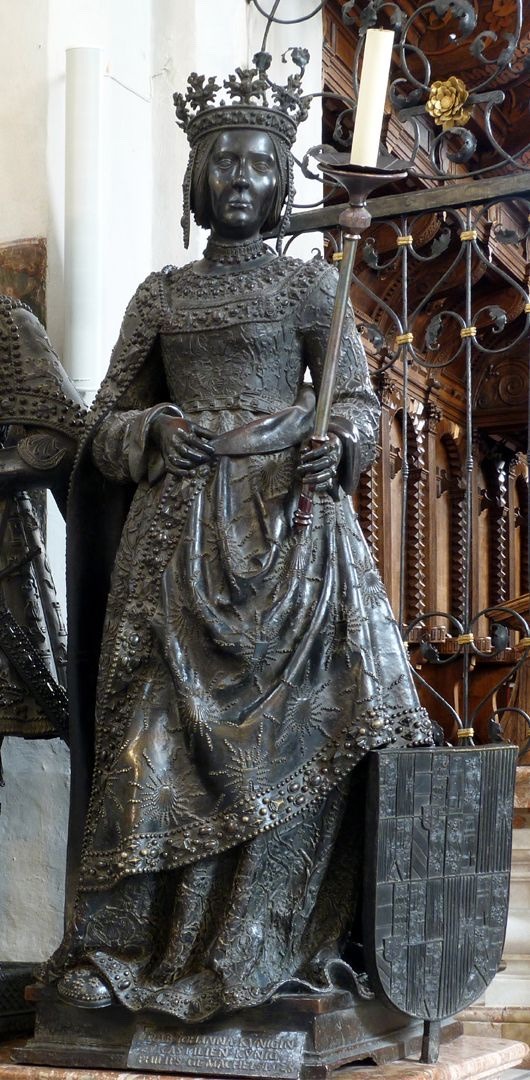

Bronze statues of Juana I of Castile and Archduchess Margaret of Austria in the Empty Tomb of Emperor Maximillian I
#juana of castile#juana i of castile#joanna of castile#Joanna I of Castile#Margaret of Austria#tomb#art#bronze sculpture#bronze statue#northern renaissance art#northern renaissance#renaissance art#renaissance#sixteenth century#16th century art#16th century#art history#history of art#maximilian i#holy roman empire#holy roman emperor
81 notes
·
View notes
Text
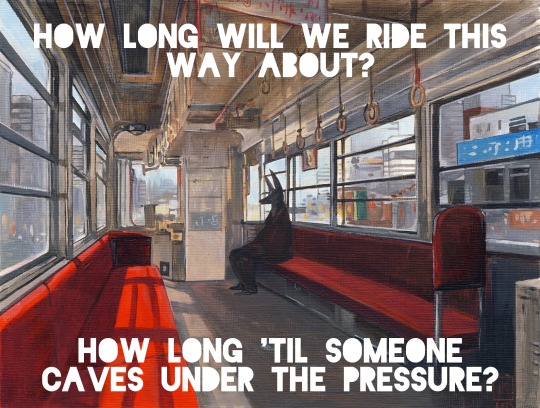
Idylls of the King by The Mountain Goats // Anubis Traveling by Joanna Karpowicz
#lyrics edit#art#lyrics#collage art#idylls of the king#the mountain goats#mountain goats#the mountain goats lyrics#tmg#tmg art history#tmg lyrics#Joanna Karpowicz
42 notes
·
View notes
Text
youtube
Watch the 2024 American Climate Leadership Awards for High School Students now: https://youtu.be/5C-bb9PoRLc
The recording is now available on ecoAmerica's YouTube channel for viewers to be inspired by student climate leaders! Join Aishah-Nyeta Brown & Jerome Foster II and be inspired by student climate leaders as we recognize the High School Student finalists. Watch now to find out which student received the $25,000 grand prize and top recognition!
#ACLA24#ACLA24HighSchoolStudents#youtube#youtube video#climate leaders#climate solutions#climate action#climate and environment#climate#climate change#climate and health#climate blog#climate justice#climate news#weather and climate#environmental news#environment#environmental awareness#environment and health#environmental#environmental issues#environmental education#environmental justice#environmental protection#environmental health#high school students#high school#youth#youth of america#school
17K notes
·
View notes
Text





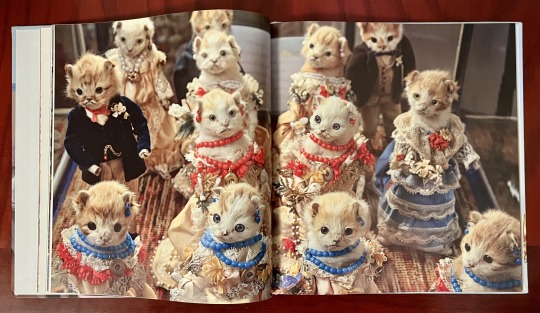
Book 473
Walter Potter’s Curious World of Taxidermy
Dr. Pat Morris with Joanna Ebenstein
Blue Rider Press / Penguin Random House 2014
Born in Bramber, Sussex, England in 1835, Walter Potter (d. 1918) grew up in the family inn/pub, The White Lion. He left school at the age of fourteen and began trying to come up with ways that his naturalist/taxidermy hobby could help encourage business at the pub. At the age of 19, inspired by his younger sister’s collection of nursery rhymes, Potter started creating his first major tableu, The Death and Burial of Cock Robin—a work that would take him seven years to complete. Housed within a wooden house-shaped case nearly two yards wide, Cock Robin features 98 birds, a small handmade bull, butterflies and other insects, and even a snake—artfully arranged in a solemn mourning scene down a path leading into a church. Some of the mourners are even crying glass tears. The work delighted the Victorian sensibility.
Eventually, Potter opened a museum to house his work and over the course of his life would create, among numerous smaller pieces, at least a dozen large tableaux with titles like: The Kittens’ Wedding (c. 1890), Rabbits’ Village School (c. 1888), The Upper Ten (c. 1880), depicting a squirrel card club, and The Lower Five (c. late 1800s), a scruffy rats’ den being raided by local police (also portrayed by rats).
#bookshelf#library#personal collection#personal library#books#bibliophile#book lover#illustrated book#booklr#art#walter potters curious world of taxidermy#pat morris#joanna ebenstein#blue rider press#nature#natural history
5 notes
·
View notes
Text
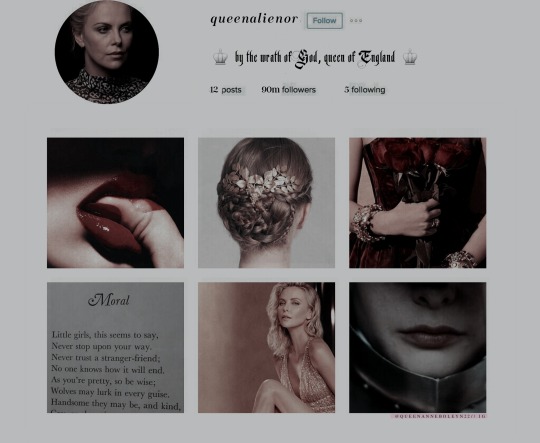



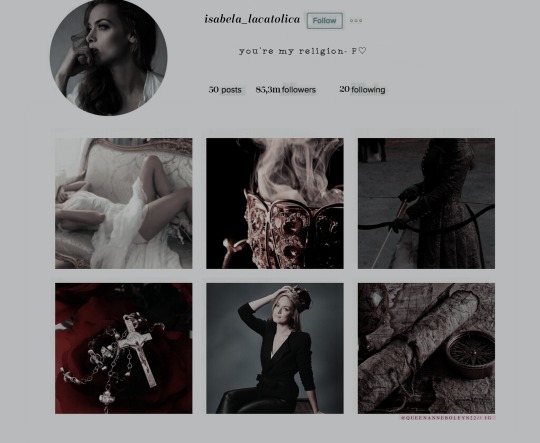

↳ #qab22modern
"I can barely conceive of a type of beauty in which there is no Melancholy. We are weighed down, every moment, by the conception and the sensation of Time. And there are but two means of escaping and forgetting this nightmare: pleasure and work. Pleasure consumes us. Work strengthens us. Let us choose. I should like the fields tinged with red, the rivers yellow and the trees painted blue. Nature has no imagination."
-Charles Baudelaire
#perioddramaedit#history#edit#history edit#modern au#modern aesthetic#modern edit#historical figures#au moodboard#moodboard#aesthetic#modernedit#eleanor of aquitaine#henry ii#plantagenet#joanna of castile#isabella of castile#juana la loca#richard iii#anne neville#charlize theron#tom bateman#jemima west#aneurin barnard#rachel skarsten#florence pugh#historyedit#qab22modern#15th century#english history
72 notes
·
View notes
Photo

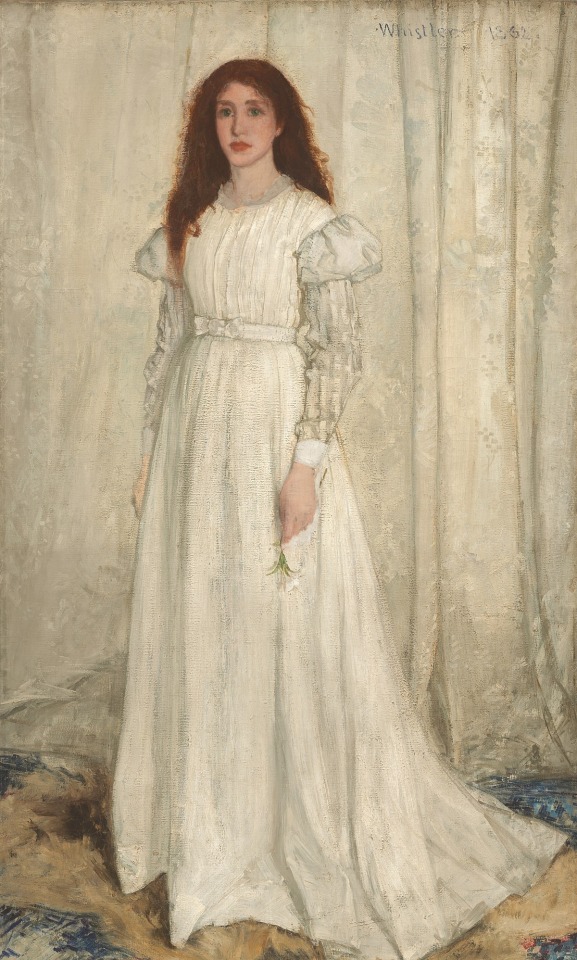
”Symphony in White, No. 1: The White Girl” (1861-62)
“Symphony in White, No. 2: The Little White Girl” (1864)
by James McNeill Whistler
#james mcneill whistler#19th century#art#artblr#art history#fashion#joanna hiffernan#women in art#light academia#muse#historical fashion#muses#white dress#femininity#tate britain#tate museum#hulderposts
28 notes
·
View notes
Text
Thread about Joanna of Castile: Part 5: A troubled transition (1497 – 1504)
The fabulous, yet toxic legacy that became hers in 1500 would greatly complicate her life as she tried to reconcile her role as consort, wife, and mother with her new role as princess of Asturias and Gerona. She would also have to face a future proprietary monarch whose royal status surpassed her. The narratives in this thread examine the deterioration in Juana's marriage.

One of the first issues with the marriage that the monarchs also noticed was that messengers were arriving without letters from either Juana or Philip.


Isabella, anxious about her daughter, had sent her envoy, Friar Tomás
de Matienzo, Sub-Prior of the Convent of Santa Cruz, to the Netherlands to find out what was happening. His detailed reports bear witness to Philip’s systematic campaign to assert his dominance over his inexperienced young wife.

Matienzo also questioned Juana about her irregular confessional habits, while later reassuring the monarchs that:
“There is as much religion in her household as in a strictly observant convent, and in this, she is very vigilant and deserves much praise.”

He also quizzed her about her failure to protect her Spanish household. Her defensiveness and extreme reserve led the Dominican to burst out that she had a “hard and pitiless heart” and was “devoid of piety [compassion].

Juana did write letters. But her silences were unsettling. In December 1496, her former aya, Teresa Manrique, who had been her daily companion and instructor, wrote from Burgos:
“I am amazed, knowing the distress and anxiety of the king and queen … when they do not receive letters from your highness with all the messages that come here … About myself, I do not know what to say except that, since I can no longer see your highness, I realize that I do not live; although I have recovered somewhat from my illnesses, the troubles of my heart … for that, the best remedy would be to have news of you …”.
Juana was also taken to task in a chaotic letter from María Manrique Chacón:
“Your highness does not remember her very dear friend doña María, and the toasted chickpeas she gave me that made me ill, the friend she loves so much …”.
Miranda too reproved her:
“Although I have written very often, you have never sent me a word or written to me … I ask pardon that I am so bold with you, whom I love so much, and serve by day and night before God … If your highness does not answer me, I shall never write again, and this shall be my last letter.”
In general, Juana's failure to keep in touch with family and friends is seemingly more due to her extreme sensitivity to criticism and her reputation than to her indifference. She admitted that she had longed for home and had felt:
“So dispirited and depressed that every time she remembered how far away she was from [Isabel] she could not stop weeping to be forever so separated from her.”
Her treasurer, Mújica, subsequently informed the monarchs that:
“When some days go by without hearing from your highnesses, she is the most distressed woman in
the world.”
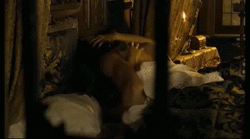



To her dismay, the Philip with whom she had enjoyed such an electric physical relationship had soon shown his true colours. As her husband, and as Burgundy’s duke, he required her complete surrender to all his commands. This included controlling the personnel and the running of her household, an area in which, according to royal protocol, she should have been independent. She told Friar Tomás that Philip and his councillors didn't let her take part in it.
Philip had begun by taking over her finances: he did not give her the annual sum supposed to be allocated to her for her household expenditure, despite contracting to do just that in their joint marriage treaty. Instead, the archdukes own people took care of the money that should have gone to Juana. This meant, the envoy wrote to Isabella, that:
“She [Juana] is so poor that she has not a maravedi to give alms.”
She certainly did not have the money to pay her servants, who
began to drift away because they could not “sustain themselves at
court.” Within six months of her arrival in Burgundy, eighty of her
ninety-eight male servants had left her side. That suited Philip very well. It meant he was able to replace the vast majority of his wife’s Spanish officials with his nominees; even many of those who loyally remained were bribed to support Philip as master rather than Juana as mistress. And, totally out of her depth, she simply did not know how to react to the man she could see was taking over her life but to whom she was still so physically attracted.
Yet, she had tried. On at least one occasion, Friar Tomás noticed that Juana had found the courage to protest. When asked to approve payments already made about which she had known nothing, she signed as she was bid but then said,
“Be it so for this year, but next year I desire that they do not make grants without my consent.”
As this flash of spirit did not occur until after Phillip's representatives had left her, Friar Tomás wrote resignedly,
“I think it will always be the same thing.”
The envoy was right: Juana didn't see any point in protesting again. Philip cruelly and deftly went a stage further after each battle he won.
Philip had insisted that Madame de Hallewin, once his own governess, should be one of Juana's key ladies-in-waiting. Juana’s desire to have Doña Marina Manuel, whom Isabella also trusted, in that post had been ignored. According to Friar Tomás:
Madame de Hallewin, together with Philip’s councillors, “Have so much intimidated” Juana, “that she dare not raise her head.”


If she tried to complain to Philip himself about how she was being treated, Juana confessed to Isabella’s messenger, her husband just told his councillors, and she “receives great injury from it.” Friar Tomás does not tell us what that “injury” was, but he does report on her sadness and her growing realization that she was so very much alone.
Juana was lucky because a few of her former attendants, including ten of her women, chose to stay with her, so she kept some links to Spain to help her feel less homesick. And homesickness was a problem for her in those early years.
“She could never think of how far she was from your Highness,” the envoy wrote to Isabella,
“Without feeling the desire to cry because she was so far from your Highness for ever.”

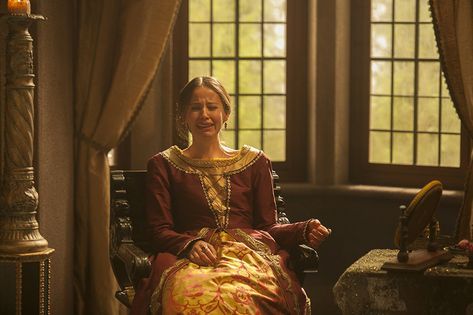
If Juana cried, she would do so privately. Her public persona reflected her gracious nature, similar to that of Philip, who exhibited a similar demeanour.

Any friction within the marriage was well hidden. On state occasions, Juana and Philip dined publicly together, the embodiment of marital harmony. Philip made sure that Juana was well-dressed and bejewelled.

Appearances mattered, status had to be upheld. He presented Juana with diamonds and pearls that had once graced the delicate neck of his mother, Mary of Burgundy; he made sure that her horses were impressively saddled; he gave her pictures; he gave her religious items such as an image of Saint Margaret, possibly because Saint Margaret was the patron saint of women in childbirth. In the latter area, the couple certainly did their duty by the state.
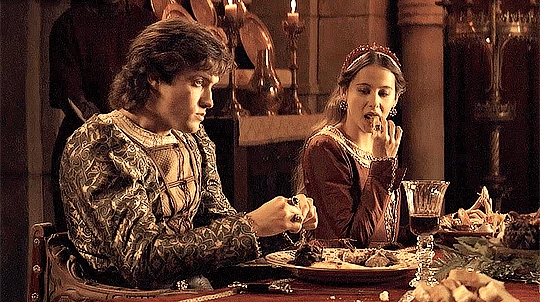
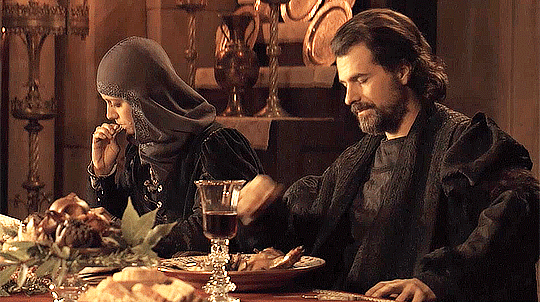
Juana was torn between demanding parents and a husband whose advisers resented their interference. Philip was personally ambitious, greedy, and vehemently pro-French, none of which boded well for a future king of Spain.

During the painful years as archduchess of Burgundy in Flanders, Juana saw herself exiled and impoverished, without friends and countrymen, and without the protection and the help of her parents.


The emotional upheavals caused by the ambitions of her husband, and the unexpected reality of her inheritance after her mother’s death, brought her to personal and political confusion. This was well exploited by her husband, who started the rumour of her mental incapacity.
Juana alternated between the desire to pursue a normal life—pious and remote from the court—and the obligation to fulfil the exigencies of protocol—ostentatious and exhibitionist—that her royal rank required. Finding herself surrounded by her husband’s servants exacerbated her tendencies to hysteria and lack of control.
Sources: Fleming, G. B. (2018). Juana I: Legitimacy and Conflict in Sixteenth-Century Castile (1st ed. 2018 edition). Palgrave Macmillan.
Fox, J. (2012). Sister Queens: The Noble, Tragic Lives of Katherine of Aragon and Juana, Queen of Castile. Ballantine Books.
Gómez, M. A., Juan-Navarro, S., & Zatlin, P. (2008). Juana of Castile: History and Myth of the Mad Queen. Associated University Presse.
#joanna of castile#philip the handsome#trastamaras#juana i of castile#juana la loca#joana la loca#spanish history
31 notes
·
View notes
Text
youtube
Watch the American Climate Leadership Awards 2024 now: https://youtu.be/bWiW4Rp8vF0?feature=shared
The American Climate Leadership Awards 2024 broadcast recording is now available on ecoAmerica's YouTube channel for viewers to be inspired by active climate leaders. Watch to find out which finalist received the $50,000 grand prize! Hosted by Vanessa Hauc and featuring Bill McKibben and Katharine Hayhoe!
#ACLA24#ACLA24Leaders#youtube#youtube video#climate leaders#climate solutions#climate action#climate and environment#climate#climate change#climate and health#climate blog#climate justice#climate news#weather and climate#environmental news#environment#environmental awareness#environment and health#environmental#environmental issues#environmental justice#environment protection#environmental health#Youtube
17K notes
·
View notes